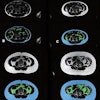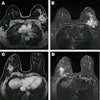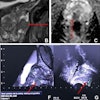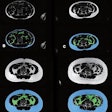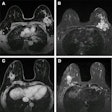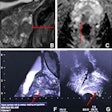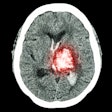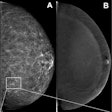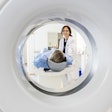
Uncompressed digital mammograms can be transmitted to different institutions with different workstations, without loss of information, Viennese researchers have found. In addition, the transmission process does not significantly influence image quality, lesion detection, or BI-RADS rating.
Teleradiology can aid in after-hours coverage, service in remote areas, and subspecialty or expert reading. However, when sending mammograms, problems arose because of technical limitations mainly due to limited transmission capacities and problems with displaying the images, wrote researchers in the European Journal of Radiology (10 April 2012, article in press).
To overcome these issues, some centers started to compress the images. But fortunately, digital mammography systems and PACS archives with large storage capacities, as well as data links with extremely high transmission rates, exist, which means the centers may not have to do so anymore.
"To our knowledge, only few studies exist about teleradiology for mammography screening programs and secondarily digitized and compressed mammograms," wrote lead author Dr. Julia Fruehwald-Pallamar from the radiology department, Division of Molecular and Gender Imaging, at the Medical University of Vienna.
No clinical trial has been published where uncompressed digital mammograms were sent via data link, so the researchers set out to demonstrate the feasibility of sending uncompressed digital mammograms in a teleradiologic setting without loss of information by comparing image quality, lesion detection, and BI-RADS assessment.
Contrast detail mammogram (CDMAM) phantoms were sent bidirectionally to two hospitals via the network. For the clinical aspect of the study, 200 patients were selected based on BI-RADS: 50% BI-RADS I and II; and 50% BI-RADS IV and V. Two hundred digital mammograms (800 views) were sent to two different institutions via a teleradiology network, meaning three institutions looked at the mammograms.
Three readers evaluated those 200 mammography studies at institution one where the images originated and in the two other institutions (institutions two and three) where the images were sent. The readers assessed image quality, lesion detection, and BI-RADS classification.
Automatic readouts showed CDMAM image quality was identical before and after transmission, according to the researchers. The image quality of the 200 studies (total 600 mammograms) was rated as very good or good in 90% to 97% before and after transmission. Depending on the institution and the reader, only 2.5% to 9.5% of all studies were rated as poor.
The readers agreed on the final BI-RADS assessment 90% and 91% of the time at institution one and institution two, respectively, and 86% to 92% at institution one and institution three, respectively. The agreement was even higher for conformity of content (BI-RADS I or II and BI-RADS IV or V), according to the researchers.
The readers at all three institutions had a high agreement with regard to the detection of masses and calcifications, as well as BI-RADS classification (κ: 0.775-0.884). Results for inter-reader agreement were similar.
State-of-the-art equipment, frequent calibration and inspection, and quality assurance by a medical physicist are necessary conditions for obtaining good-quality mammograms.
"In a teleradiologic setting, we can only expect to receive good-quality mammograms over the network when the site of origin complies with the quality regulations," Fruehwald-Pallamar wrote.
No loss of quality was identified in their study, showing it is possible to digitize radiographs of a CDMAM phantom, compress the data sets, and send them without loss of information.
"On the other hand, our results show that if the quality at the site of origin is poor, the quality at the receiving institution is poor, as well," she added. "This underlines the importance of quality measures for mammography at the site of origin."
The researchers used a dedicated line with a 1 GB broadband transmission capacity. A large data volume (8 MB each view, 32 MB for a mammography study) can be easily transmitted, they said.
"Using a broadband connection, transfer time is not an issue," Fruehwald-Pallamar wrote. An average daily workload of a screening center -- in this instance 6.4 GB -- can be transmitted via a network in a reasonable time. Even privately used Web-based networks (e.g., ADSL) have download rates from 8 MB/s to 12 MB/s.
"In such a network, the transmission of a whole mammography study would only take up to four seconds," she noted.
One of the advantages of teleradiology is that mammograms can be sent to a specialist immediately without the need to wait for a specialist's office hours or to make a personal appointment. The mammograms arrive at the expert's server where they are accessible at any time.
"The image-quality analysis could be seen as a limitation, as we evaluated the image-quality parameters for the whole mammography study rather than each view," Fruehwald-Pallamar stated. "However, this should not be seen as a limitation, as a poor rating (rate 3, 4, 5) of only one image affected the rating of the whole study, so this is an even stricter criteria."
The images had to be read without prior examinations because of the selection criteria and without knowledge of the patient's history, so the chosen images had to have an unequivocal BI-RADS rating only from mammograms; no BI-RADS III cases were selected. The group of patients also included more BI-RADS IV and V lesions than would be found in a screening population.
